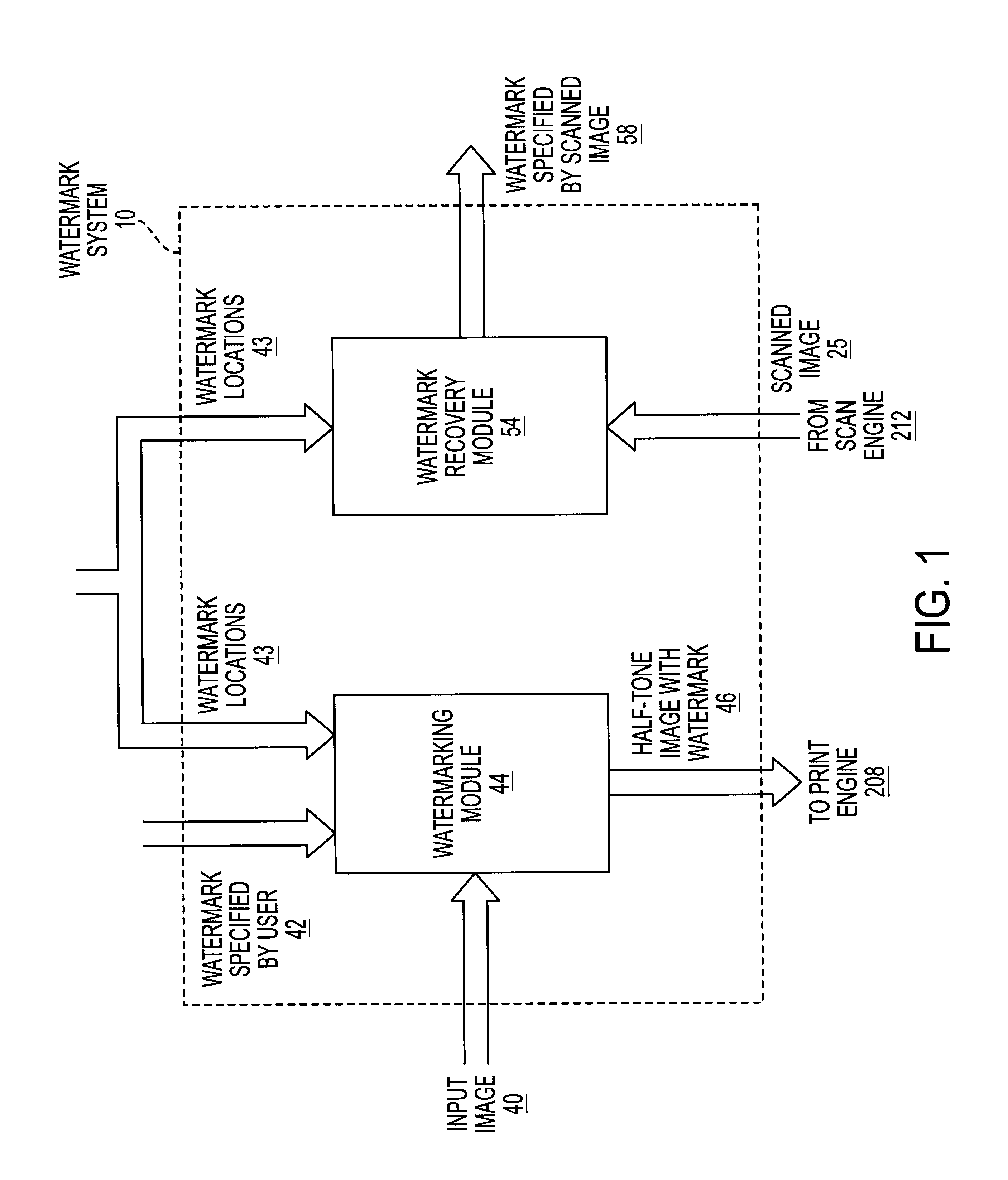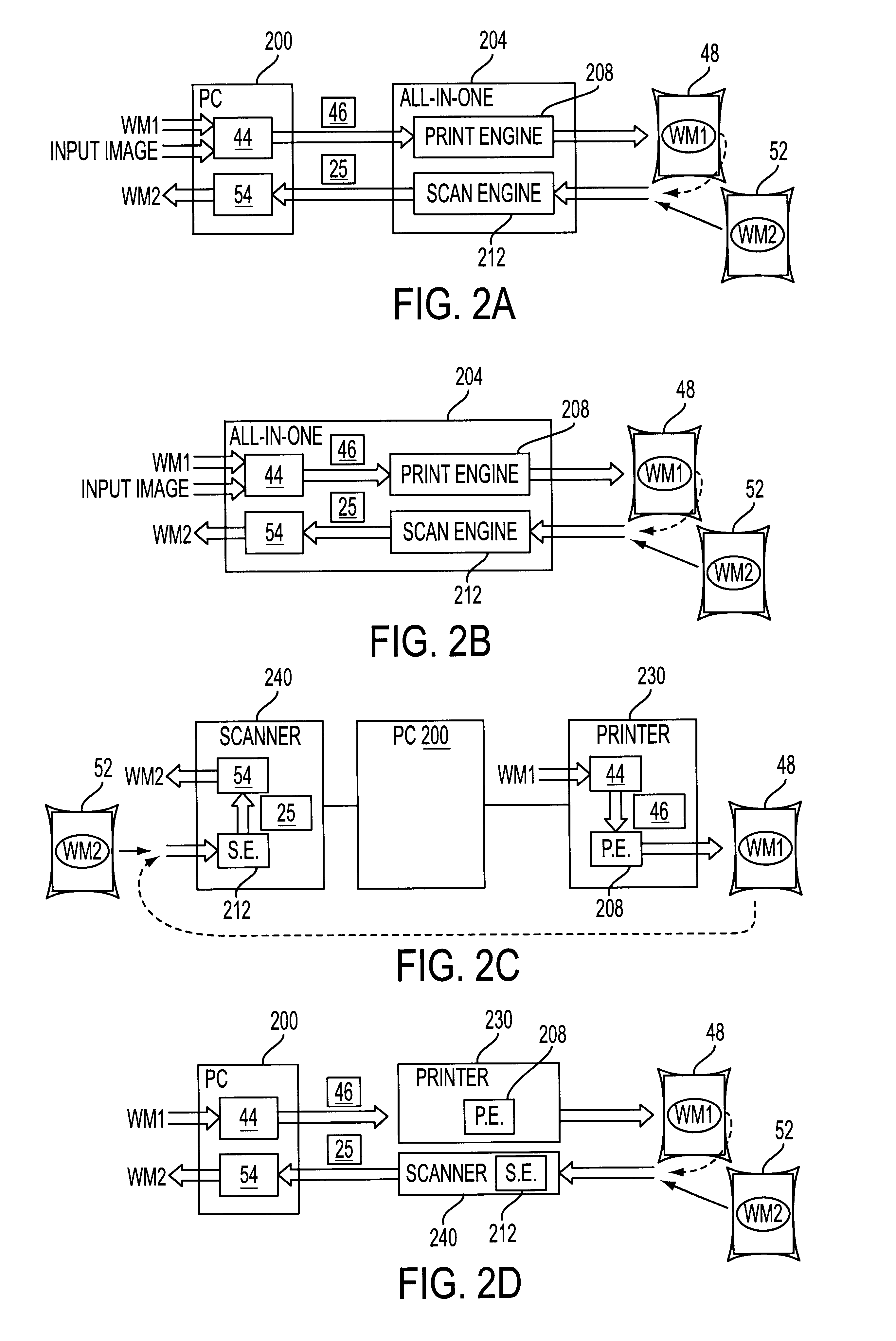Halftone watermarking method and system
a halftone watermarking and watermarking technology, applied in image watermarking, instruments, computing, etc., can solve the problems of increasing the threat that these printers are used in illegal or fraudulent operations, the prior art watermarking techniques are generally limited to digital images and have not been extended to hard copy images
- Summary
- Abstract
- Description
- Claims
- Application Information
AI Technical Summary
Benefits of technology
Problems solved by technology
Method used
Image
Examples
Embodiment Construction
FIG. 13(a) presents part of a Lena image half-toned without a watermark. FIG. 13(b) presents the same image with a watermark rate of 0.01 (i.e., one bit for every 100 pixels), and FIG. 13(c) presents the same image with a watermark rate of 0.142 (i.e., about one bit for every 7 pixels).
In FIG. 13(b), the watermark encoder uses an estimator lookup table of 1,500 entries, and embeds 2,729 bits of watermark information (i.e., about one bit for every 96.1 pixels), for a rate of about 0.01. The standard deviation d.sub.ij at the 1,388 flip locations is 25.7 gray levels, which represents a distortion of 0.101 in the normalized scale.
In FIG. 13(c), the watermark encoder uses an estimator lookup table of 13,500 entries, and embeds 37,299 bits of watermark information (i.e., about one bit for every 7 pixels), for a rate of about 0.142. The standard deviation d.sub.ij at the 18,503 flip locations was 37.4 gray levels, which represents a distortion of 0.147 in the normalized scale. It is noted...
PUM
 Login to View More
Login to View More Abstract
Description
Claims
Application Information
 Login to View More
Login to View More - R&D
- Intellectual Property
- Life Sciences
- Materials
- Tech Scout
- Unparalleled Data Quality
- Higher Quality Content
- 60% Fewer Hallucinations
Browse by: Latest US Patents, China's latest patents, Technical Efficacy Thesaurus, Application Domain, Technology Topic, Popular Technical Reports.
© 2025 PatSnap. All rights reserved.Legal|Privacy policy|Modern Slavery Act Transparency Statement|Sitemap|About US| Contact US: help@patsnap.com



